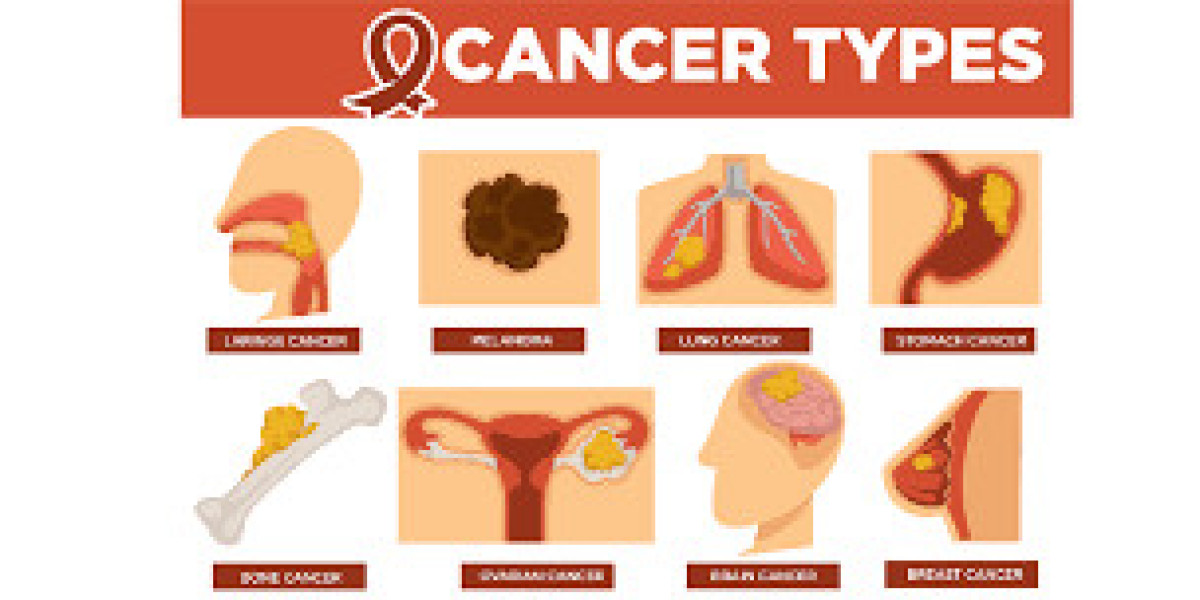Cancer is a complex disease that affects millions of people worldwide. It occurs when abnormal cells grow uncontrollably and spread to other parts of the body. Understanding the most common types of cancer, their symptoms, risk factors, and treatment options can empower you to take proactive steps toward prevention and early detection.
1. Lung Cancer
Lung cancer is one of the leading causes of cancer-related deaths globally. It often develops due to prolonged exposure to tobacco smoke, air pollution, or harmful chemicals. Symptoms include a persistent cough, chest pain, shortness of breath, and coughing up blood. Early detection is crucial for improving treatment outcomes.
2. Breast Cancer
Breast cancer primarily affects women but can also occur in men. It usually presents as a lump in the breast, changes in breast size or shape, nipple discharge, or skin changes. Regular self-examinations and mammograms help detect breast cancer early, significantly increasing survival rates.
3. Colon Cancer
Colon cancer starts in the large intestine and can affect the digestive system's function. Symptoms may include changes in bowel habits, blood in stool, abdominal discomfort, and unexplained weight loss. A healthy diet rich in fiber, regular exercise, and screenings such as colonoscopies can reduce the risk.
4. Prostate Cancer
Prostate cancer is common among older men. Early stages may not show symptoms, but advanced stages can cause difficulty urinating, blood in urine, or pelvic discomfort. Regular screening and consultation with a healthcare professional are important for early diagnosis.
5. Skin Cancer
Skin cancer develops in the skin cells, often due to excessive exposure to ultraviolet (UV) rays from the sun or tanning beds. Warning signs include new or changing moles, sores that do not heal, or unusual skin growths. Protecting your skin with sunscreen and wearing protective clothing reduces risk.
6. Cervical Cancer
Cervical cancer affects the lower part of the uterus and is mostly caused by the human papillomavirus (HPV). Early symptoms may include abnormal vaginal bleeding or pelvic pain. Vaccination against HPV and regular Pap smears are effective preventive measures.
Risk Factors Across Cancer Types
While each cancer type has unique risk factors, some common ones include:
Smoking and tobacco use
Poor diet and lack of exercise
Excessive alcohol consumption
Exposure to carcinogens like chemicals and radiation
Family history of cancer
Chronic infections
Treatment Options
Cancer treatment depends on the type and stage but may include surgery, chemotherapy, radiation therapy, targeted therapy, or immunotherapy. Alongside treatment, maintaining overall health is essential. Some medications like Tadalista 60mg, though primarily used for other conditions, may assist patients in improving quality of life during or after treatment, but should only be used under medical supervision.
Conclusion
Being informed about common cancer types helps in recognizing symptoms early and taking preventive actions. Regular medical checkups, healthy lifestyle choices, and timely screenings play a crucial role in fighting cancer. Stay vigilant and proactive to safeguard your health.




